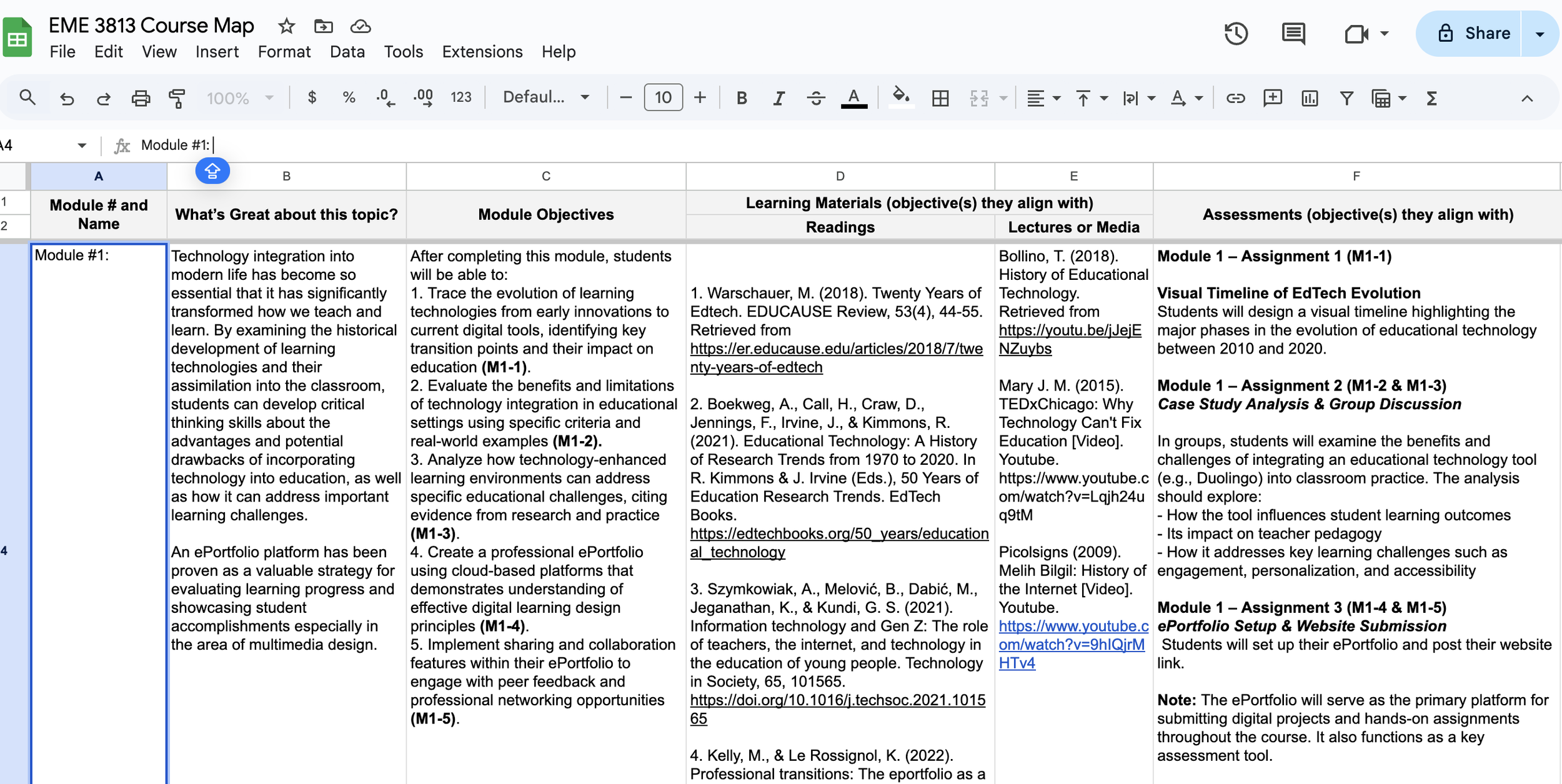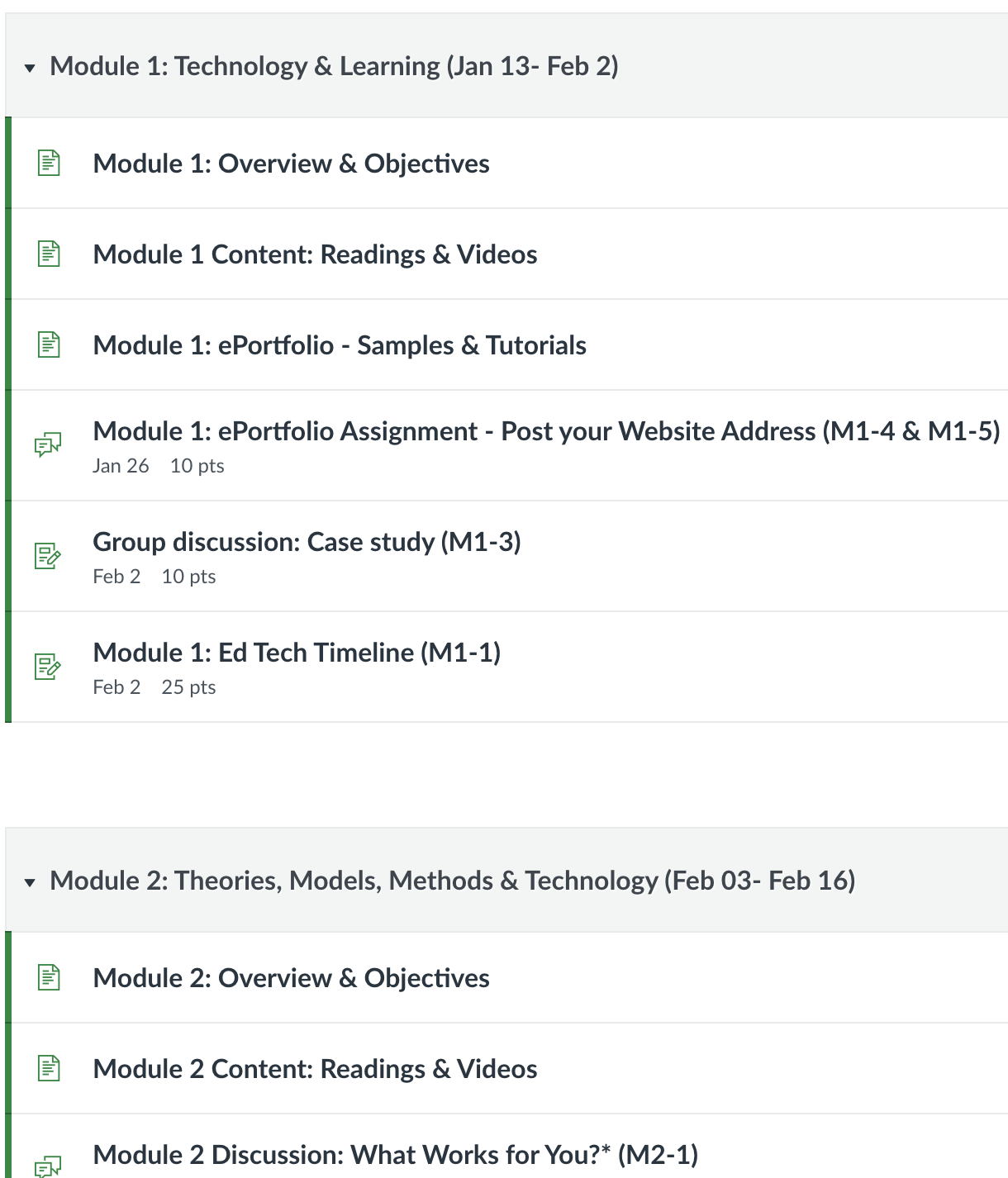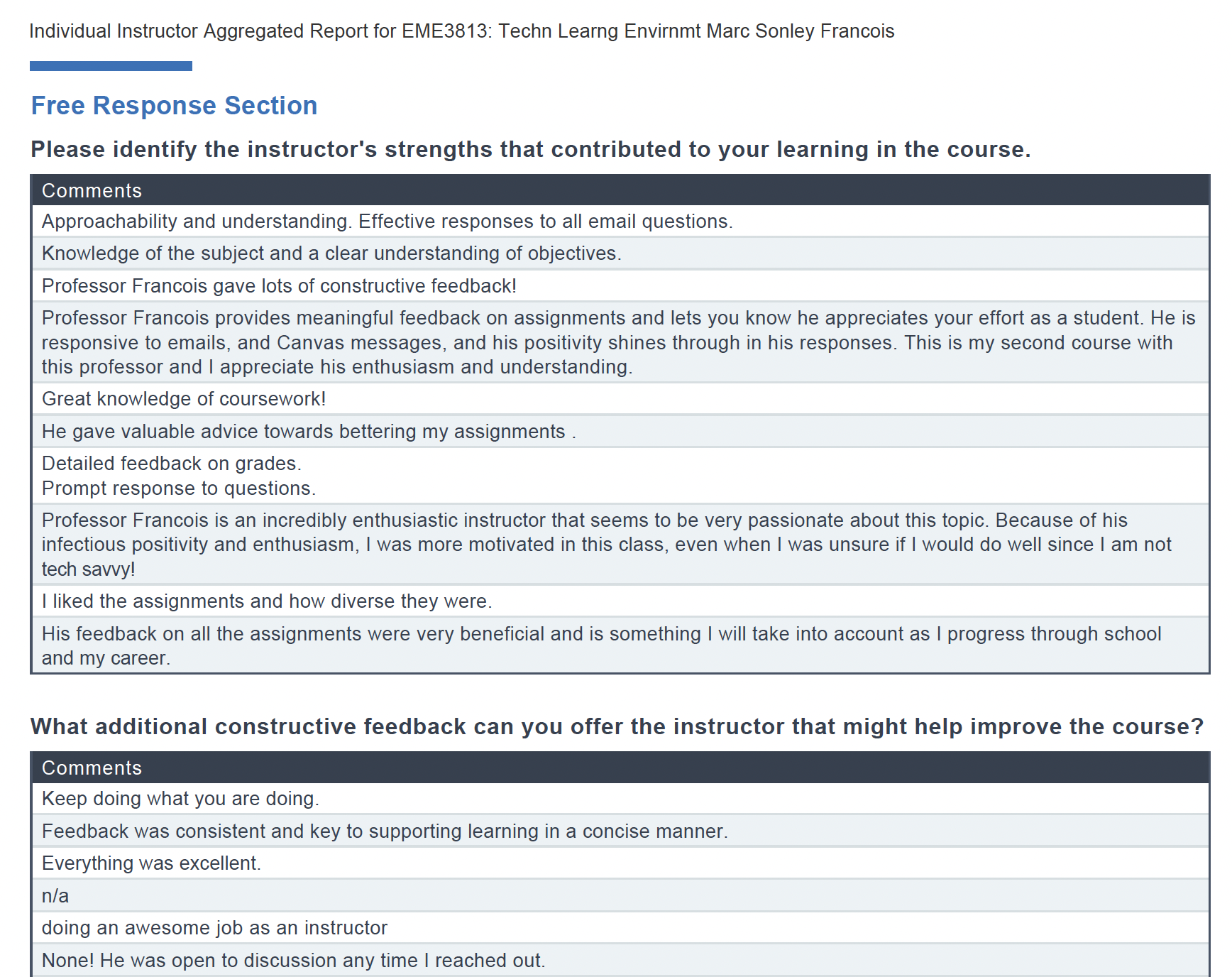A comprehensive course redesign guided by student feedback and Quality Matters standards that transformed learning outcomes and earned external peer validation.
-
In 2021, I inherited an outdated undergraduate educational technology course with poor design that resulted in low student satisfaction and engagement. Initial student evaluations reflected the impact of unclear navigation, misaligned assessments, and limited interactivity.
THE OPPORTUNITY
Rather than accepting the status quo, I saw this as an opportunity to demonstrate how systematic instructional design could transform learning outcomes. My goal was to redesign the entire course experience using Quality Matters standards as a framework for excellence.
MY ROLE
Lead Course Designer & Instructor
Data collection and analysis to identify specific improvement areas
Stakeholder advocacy to secure redesign approval
Complete course restructuring using QM guidelines
Implementation of evidence-based design principles
-
DATA-DRIVEN IMPROVEMENT PROCESS
Initial Challenge (Fall 2021)
Poor student evaluations highlighted fundamental design issues:
Unclear course navigation and expectations
Misaligned assessments that didn't match learning objectives
Limited interactive elements and engagement opportunities
Accessibility barriers for diverse learners
Student Voice Research (Spring & Fall 2022)
Designed and conducted systematic feedback collection:
Deployed mid-semester surveys to identify specific pain points
Conducted focus groups with struggling and successful students
Analyzed engagement data from Canvas LMS
Documented specific barriers to learning success
Evidence-Based Advocacy (Spring 2023)
Compiled comprehensive improvement proposal:
Presented quantitative data on student satisfaction trends
Demonstrated correlation between design issues and performance
Proposed systematic redesign using Quality Matters framework
Secured supervisor approval after multiple stakeholder meetings
-
SYSTEMATIC REDESIGN APPROACH
Course Architecture Redesign
Created comprehensive course map ensuring:
Learning objectives clearly stated and measurable
Direct alignment between objectives, materials, and assessments
Logical progression with clear rationale for each module
Transparent connection between activities and learning goals
Interactive Learning Integration
Replaced static content with 12 H5P interactive activities
Implemented multimedia storytelling for authentic application
Added collaborative elements using Padlet and VoiceThread
Created scenario-based learning for real-world contexts
Universal Design Implementation
Established consistent navigation structure
Added captions and transcripts for all video content
Implemented proper heading hierarchy for screen readers
Designed mobile-responsive layouts for accessibility
Quality Assurance Process
Conducted multiple iteration cycles with student feedback
Pilot tested redesigned modules before full implementation
Self-evaluated against all 149 Quality Matters standards
Submitted for external peer review by certified evaluators
-
MEASURABLE IMPROVEMENT OUTCOMES
Student Satisfaction Transformation
Before Redesign: 3.1/5 average course rating
After Redesign: 4.8/5 average course rating
Improvement: 80+ % increase in student satisfaction
Learning Engagement Metrics
Before: 78% average completion rate
After: 97% average completion rate
Improvement: 70+% increase in course completion
External Validation Achievement
🏆 Quality Matters Exemplary Recognition (2024)
Met 144 quality standards across 12 categories
Peer-reviewed by certified external evaluators
Recognized as model of excellence for undergraduate online learning
Academic Performance Impact
89% of students achieved proficiency on all learning objectives
40% increase in time-on-task engagement
85% of students reported applying course concepts in professional practice
-
STAKEHOLDER ENGAGEMENT STRATEGY
Student-Centered Design Process
Incorporated learner feedback at every iteration stage
Conducted usability testing with diverse student populations
Created multiple pathways for different learning preferences
Established ongoing feedback loops for continuous improvement
Administrative Advocacy Approach
Built business case using quantitative performance data
Demonstrated alignment with institutional quality initiatives
Proposed phased implementation to minimize disruption
Secured resources and support through evidence-based arguments
Quality Assurance Integration
Used Quality Matters rubric as systematic design framework
Implemented peer review processes throughout development
Aligned with institutional accessibility and inclusion standards
Created replicable model for other course redesign projects
-
TRANSFORMATION VALIDATION
"I almost dropped this course after seeing reviews from previous semesters. I'm so glad I stayed - this course completely changed how I think about technology in education."
— Undergraduate Student, Spring 2024
"As a student with learning differences, I appreciated how accessible everything was. I never had to struggle with navigation or wonder what I was supposed to be learning."
— Undergraduate Student with Learning Accommodation
-
STRATEGIC INSIGHTS FOR ORGANIZATIONAL CHANGE
Successful Change Management Principles:
Data-driven advocacy is essential for securing leadership buy-in
Student voice research provides credible evidence for improvement needs
Systematic frameworks (like Quality Matters) provide clear success metrics
Iterative testing reduces risk and builds confidence in new approaches
Corporate Training Applications:
Same data-driven approach applies to workplace learning challenges
Employee feedback can identify specific performance barriers
External validation frameworks build stakeholder confidence
Systematic redesign processes ensure sustainable improvements
Scalable Quality Assurance:
Quality Matters principles transfer to any learning environment
Documentation of improvement process enables replication
External review processes provide objective success measures
Continuous feedback integration ensures ongoing effectiveness






